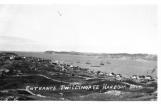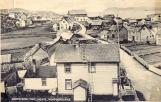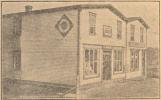1
Toulinguet was the French name for Twillingate even before the 1713 Treaty of Utrecht. The French fishing fleet fished the waters of Notre Dame Bay between 1650-1690. Twillingate is a group of islands at the mouth of Notre Dame Bay and bears a striking resemblance to a group of islands off the French coast of Brest, named Toulinguet. These waters were teaming with cod and salmon and were fished by French and English fishermen, returning to Europe for the winter. Permanent settlement was not allowed and it was not until the early 1700's did the English actually winter at Twillingate.By 1760 the two main merchants Nobel and Slade were bringing in over a thousand pounds worth of business a year. Over the next hundred years Twillingate would increase its population tremendously and develop into one of Newfoundland's most prosperous seaports and was generally referred to as the "Capital of the North". In 1836 it was into this thriving community that John Peyton Jr. was appointed Stipendary Magistrate for the district of Twillingate and Fogo. He and his wife Eleanor Mahaney built their home at Back Hr., Twillingate North Island and raised their family. Their daughter Ann Peyton would later meet her husband Dr. William Stirling Jr. and they became the parents of Georgina Stirling.
Twillingate grew rapidly. The first Church of England church and school were built in 1819, this church was later replaced by the present day St. Peter's Anglican church. The first wooden bridge between the North and South islands of Twillingate was instigated by Magistrate John Peyton, Jr. in 1844. The first newspaper, The Northern Standard, later renamed The Twillingate Sun, was printed on March 12, 1884 and the first telegraphic link to the outside world was in 1885.
11
Old Tickle Bridge. This bridge connected the north and south Twillingate Islands.1946
Twillingate












